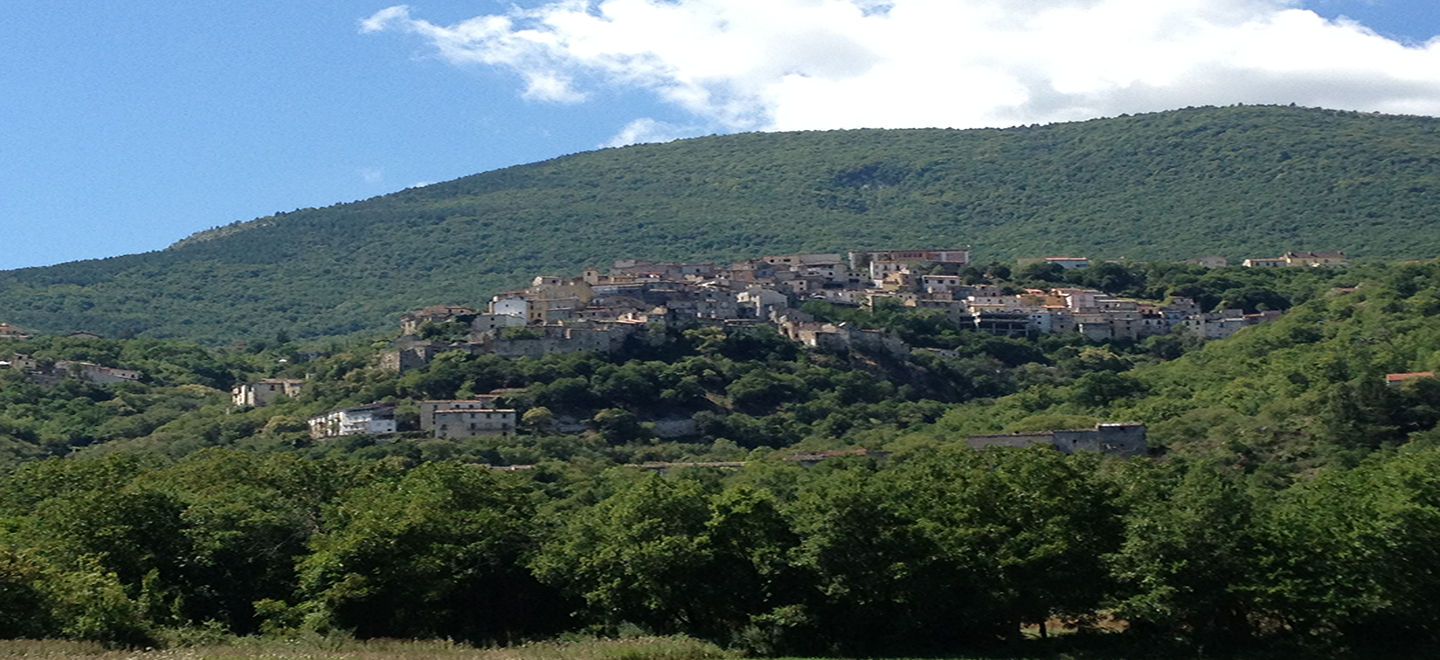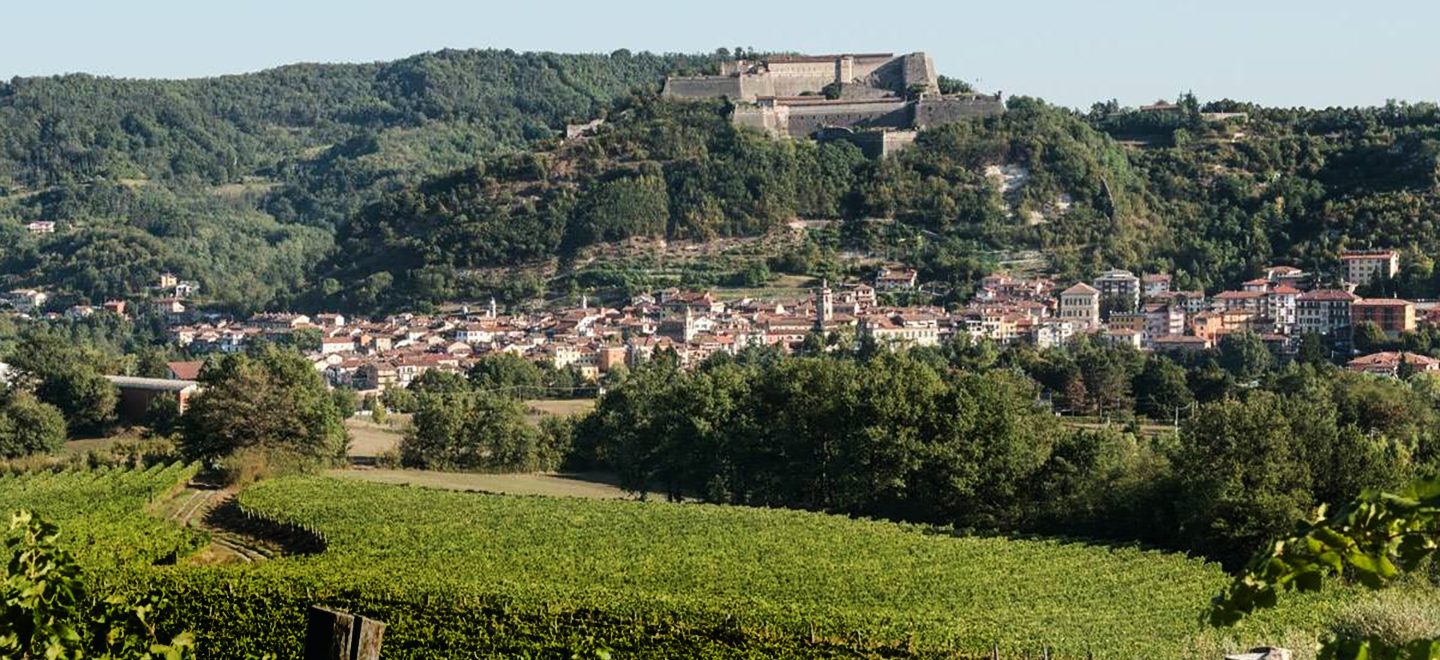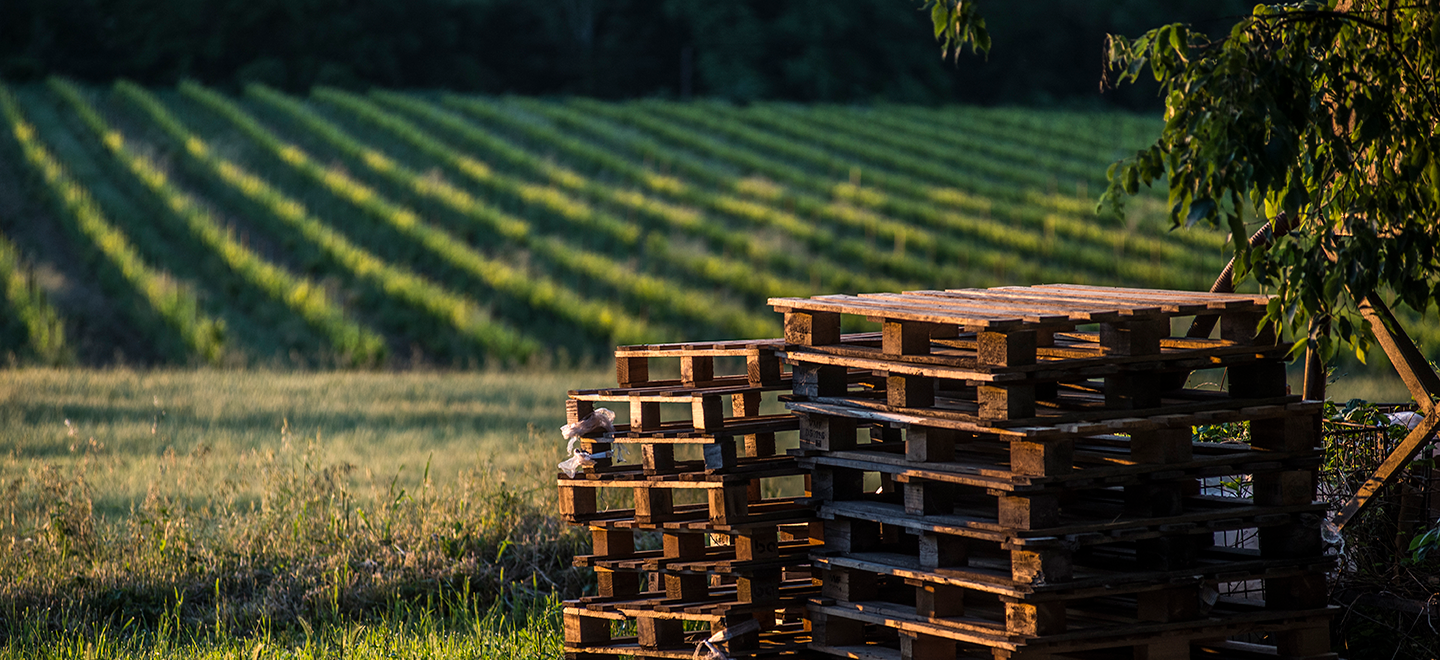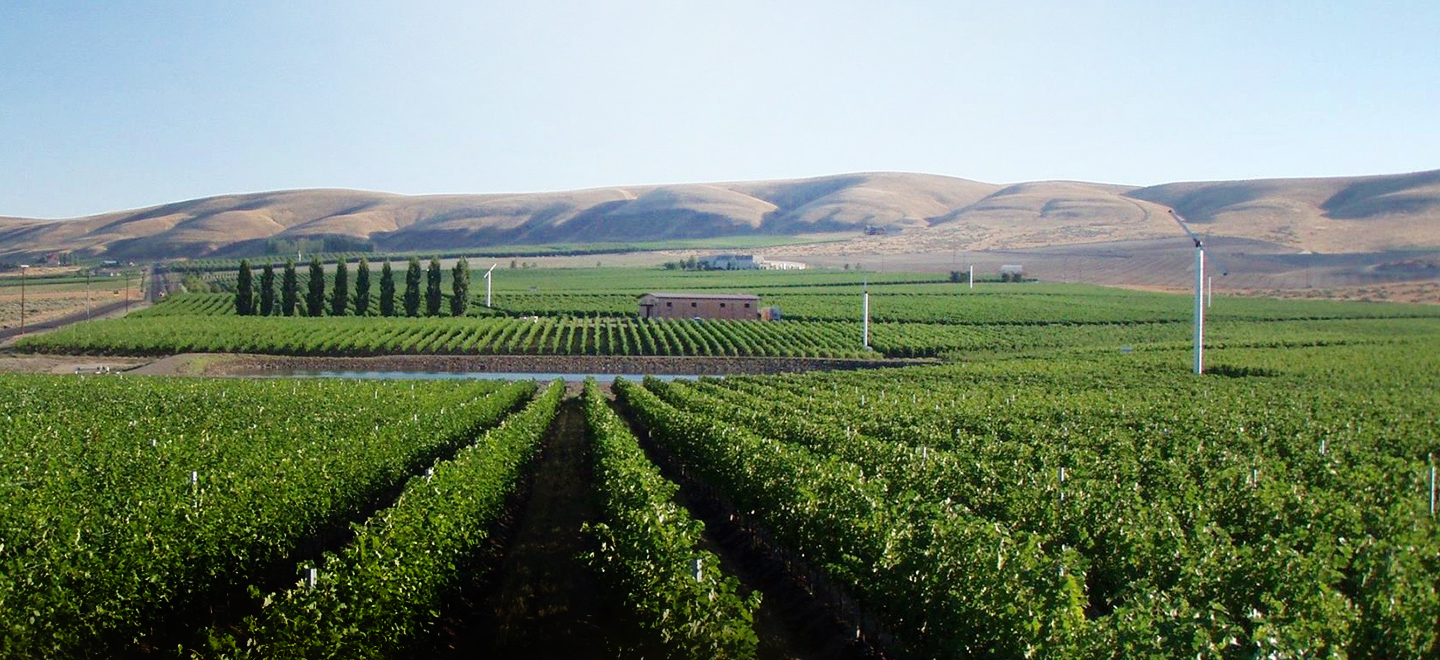Producers
-
Description:
Laurence Ployez is a third-generation winemaker at her family's estate, which was established in 1930. Ployez-Jacquemart owns 2.15 hectares of Premier Cru and Grand Cru vineyards in Ludes and Mailly-Champagne in the Montagne de Reims, known for its classic chalk slopes; in addition, Laurence purchases Premier Cru and Grand Cru grapes from 12 hectares of vineyards from growers that the family has worked with for over 20 years. All of the work in the vineyards is done by hand, from the beginning of the growing season until the grapes are harvested.
Unlike most producers in Champagne, she strives to keep the characteristic of each vintage even in her NV blends and only uses a very small amount of reserve wine, if any at all. Only first press juice goes into the Ployez-Jacquemart wines. A light filtration is used for wines produced in vats, but no filtration is used on wines aged in wooden barrels. The wines undergo a very slow bottle fermentation in a 25-meter-deep cellar, giving them extremely fine bubbles. Wines are aged nose-to-punt, or sur pointe, in lieu of being aged on their side; aging sur pointe provides the antioxidative and aging benefits of the lees while not allowing the wines to become too rich from the lees contact. When the wines are ready to be disgorged, after up to 12 years in the cellar, only a very minimal dosage is added, typically 3-4grams per liter. Ployez-Jacquemart's goal is to leave the structure of each wine intact, allowing the true character and personality of the harvest to shine through.
Ployez-Jacquemart is regularly recognized as a top producer by Peter Liem, Jancis Robinson, Revue de Vin de France, View from the Cellar, The Wine Advocate, and The Wine Spectator.
Image: Region:
Region: -
Description:
Back in Italy in 2012, at a previous company—during what now seems like a previous lifetime—I was courting a Lambrusco producer. It wasn’t meant to be, but this producer said, “you should meet my cousin.” If you know Italy and its ionic bond-like familial ties, you know that these types of re-directions can go either way, completely fizzling or exceeding all expectations. Paolo Crotti of Podere Giardino met me at VinItaly, in the burgeoning ‘organic growers’ section. He didn’t have a stand, but he brought one bottle and we tasted rogue in a corner. I found Paolo and the wine honest and open, neither one trying hard to be something. I love healthy, lively, “whole wheat,” everyday wine, and this was it.
But Podere Giardino is not simply a vineyard and winery. It’s a polyculture farm, wine being a small slice of the pie—or, more apt, a small shard of the cheese. Siblings Paolo, Federica, and Marco wear many hats, shifting from commercial duties, vineyard work and wine production, or tending to their milk cows. Give them a call and you’ll likely hear a cow moo or a tractor purr in the background.
Fifty hectares are owned, only five of which are dedicated to grapevines. The rest of their land is for pasture for forage for the cows, grains and cereals, fruits and vegetables, and some uncultivated woods. Of course, being a stone’s throw from Reggio Emilia, they make excellent Parmigiano Reggiano. Paolo has been known to bring vacuum-packed boulders of cheese to NYC. The farm also sells raw milk, both in bulk and via a milk-dispensing vending machine at local farmers’ markets—insert some bills and fill up your vessel…
Ah, right, I’m supposed to be talking about wine…
The vineyards, like the rest of the farm, are certified organic. The grape varieties are the local ones: Malvasia di Candia Aromatica, Lambrusco Marani, Lambrusco Salamino, Lambrusco Oliva, Lambrusco Maestri, Lambrusco Grasparossa, Malbo Gentile, and Ancellotta. For a few generations, grapes were sold to the local cooperative winery, made up of 300 grower members. As one of only three families farming organically, they felt it was time to break free from the co-op, and in 2007 made their first estate-bottled wine, a Charmat-method red Lambrusco called Suoli Cataldi, named for the sandy clay soils of the area. Since then, the range has expanded, including an increased exploration of metodo ancestrale, secondary fermentation in bottle, without disgorgement or sulfur. The wines delightfully toe the fine line between feeling natural and territory-driven.
We welcome Podere Giardino, which, though new to Bowler, feels as though it’s coming home to roost.
-Kevin Russell, Italy Portfolio Manager
BOWLER E-Zine Issue 4 | January 2022: Compost Cookery with Foradori, Hoch, Bucklin, and Podere Giardino
Image: Region:
Region: -
Description:
Robin Pollard, former executive director of the Washington State Wine Commission and, more importantly a local coffee roaster, returned to the industry she once led with the release of the 2015 Pollard Vineyard Cabernet Franc.
Teaming up with her life partner, Chris Camarda of Andrew Will Cellars, Robin seeks to express her high elevation Yakima Valley vineyard though plantings of Cabernet Franc, Merlot, and Cabernet Sauvignon.
The fruit comes from Robin’s 10 acre estate vineyard located in the Upper Yakima Valley, which she purchased in 2014. The vineyard, sitting at 1150 feet on a southwest facing slope, is planted to half Cabernet Franc and one quarter each of Cabernet Sauvignon and Merlot grapes in silt-loam over limestone soils.
Image: Region:
Region: -
Description:
Porter Creek is owned by Alex Davis, who biodynamically farms his low-yielding, hillside grown vines in the Russian River Valley.
The winery got its start in 1977 when Alex's father George Davis purchased 40 acres of land off Westside Road in what would eventually become the Russian River Valley AVA. Seeing that it was an ideal location for growing Burgundian varieties, George planted 10 acres of Chardonnay in addition to the 12 acres of Pinot Noir already on the land. The winery was bonded in 1982 and for the next 15 years, George paid no attention to the ever-changing wine trends and simply worked to express the unique terroir of the Russian River Valley.
In 1997, George handed wine-making responsibility to his son, Alex. In addition to growing up working along side his father at the winery, Alex studied Enology at Fresno University and spent several years in France working with renowned wine makers including Christophe Roumier and Marcel Guigal.
Although the style at Porter Creek has remained true to George’s original vision, one major change Alex made was the transition of their vineyards to biodynamic farming. Rigorous attention is paid both to the soil and the vines to ensure the entire vineyard is operating in harmony. The results are pure, balanced wines that speak strongly of their source, not just the hand that got them into the bottle.
The winery produces Pinot Noir and Chardonnay from the 20-acre estate vineyard, and also purchases fruit for the Zinfandel, Carignane, Syrah, Viognier and a few other variety wines.
In the cellar, Alex uses about around 30% whole cluster on the Pinot Noirs, while the whites are direct pressed. Following a 3-4 day cold soak (for the Pinots), native yeasts are used for fermentation which happens outdoors in stainless steel tanks. Aging is done in 25-30% new oak.
Click here to read Bram Johnson's review of Porter Creek Vineyards!
Image: Region:
Region: -
Description:
Praesidium is a 7-hectare estate in the Peligna Valley, the genetic birthplace of the Montepulciano grape. Enzo Pasquale, his wife Lucia, and their kids, Antonia and Ottaviano, are the last winegrowers of the village of Prezza. The village itself sits on a rocky outcropping that has a near-360° view of the surroundings. It makes sense, then, that the name Prezza comes from the Latin verb praeesse (to preside), and that the village was the “Praesidium” (defense garrison) of the Peligni tribe, an Italic people who eventually acquiesced to Rome.
Praesidium is also one of the main reasons I’m selling wine today. They’re responsible for my first real lightbulb, epiphanic “wine moment.” Every once in a while someone asks me, if I were to become a wine director, which estates I would have to have on the wine list, my list of heartthrobs. I usually struggle to answer—there’s so much great wine out there. But, Praesidium would make the cut, without a doubt. This one’s personal.
In 2002 and 2003 I lived in L’Aquila, the capital of Abruzzo.
When meeting people all around Italy, I would be asked, “L’Aquila? That’s in Abruzzo, right? What are you doing there?!” The answer to that question is a story for another time; I’m still not sure even I fully know.
I know I was playing and teaching music, and that I was young and broke. Wine was a simple accompaniment to a meal, nothing to think much about—it was on most tables in Italy twice a day, right? The €2 supermarket Montepulciano from a co-op was doing us just fine. A few years earlier in school in the States I had friends who ironically, but happily, showed up to parties with jugs of Carlo Rossi ‘Paisano.’ I didn’t turn down those pours.Someone I must have trusted told me that a rowdy bar called Ju Boss (Abruzzese dialect for il Boss!) had the greatest collection of the wines of Abruzzo in a back room. Was that possible? The same place that served hard-boiled eggs and where every night it seemed fights broke out, spilling into the streets? Going from Ju Boss the bar to Ju Boss the enoteca was like going from C.B.G.B. to the set of Masterpiece Theatre.
I asked the guy working there for a recommendation. He steered me to the Praesidium Montepulciano d’Abruzzo Riserva. I don’t remember the vintage, because that wouldn’t have been something on my radar at the time. The bottle seemed heavy and impenetrably dark. There was a wax seal near the neck and a symbol of a castle on the label. It seemed special enough. I was told to open it an hour before and drink it with an aged pecorino.To spend 20-something Euros on this bottle of Praesidium was a departure for me, a real splurge and a considerable expense at the time. I drank it with some friends from my apartment building. They didn’t really care for it, but it stopped me in my tracks. Until then, I didn’t know wine could do that—its intensity, its earthiness, its originality, and its seamlessness with an aged, almost funky cheese were startling. Yes, it was delicious, but the experience was more jolting than that.
In 2007 I was on tour and we played L’Aquila, in a theater that was a deconsecrated church built in the 900s. I went back to Ju Boss’ cantina. Now I recognized some other great bottles from other great producers. I picked up another bottle of Praesidium. This time I remember the vintage—2001. This time I opened the bottle several hours before, leaving it open in our hotel room. This time I got an even stronger pecorino. Now I knew how to love the wine.
Fast forward to 2011, fully bitten by and smitten with the wine bug, at a house party in Rome. It was the book release celebration for a writer whose focus was vini naturali. My Roman Holiday was coming to a close and I was about to head back to NYC to start a “real job” at a brand new wine importer/distributor. I saw some bottles of Praesidium at the party and said to a friend, “I love these wines. I wish I could somehow sell them in New York.” He said, “Talk to Ottaviano. That’s him right there. Yeah, right there. That’s the Praesidium guy. He’s super nice.”
He was, indeed, super nice. I couldn’t believe this humble, soft-spoken guy was responsible for such mind-blowing wines. It was the beginning of a long connection, which sometimes took different, but parallel, paths. Like some cousins, we didn’t always call, we didn’t always write. Yet I always felt like Praesidium’s ambassador on my side of the ocean.
Meticulous organic farming, a protracted growing season, low yields, long aging in cellars carved into the mother rock of Prezza, and late release all combine beautifully to express the power and freshness of this continental, mountainous terroir.
The Pasquales are a lovely close-knit family, quietly doing things their way without compromise, since 1988. I am thrilled to re-introduce their wines.-Kevin Russell, Italy Portfolio Manager
Image: Region:
Region: -
Description:
Señor Don Primitivo Quiles is one of the great figures of Spanish wine. His bodega in Monovar, established in 1780, is the oldest in Alicante, if not in all the comunidad Valenciana. They have been a family-owned winery for over 100 years and maintain of the oldest soleras on the market, dating back to 1892. Their wines are highly valued treasures in wine cellars all over Europe and a source of pride for the winemaking industry in Alicante.
The Fondillon is 100% Monastrell harvested in late October or November then placed in a solera system that began in 1948. The Cono 4 is a joven style made in large cono foudres, and represents a great expression of the warm Alicante climate yet also very earthy and complex: it's also one of the best deals in our book!
Image: Region:
Region: -
Description:
Produttori del Gavi’s origins trace back to 1951 when 83 families banded together to combine their strengths into a cooperative. The group is essentially made up of these same growers to this day, with just twelve more being admitted to the group since inception. The vineyards of member/growers are spread all over the Gavi DOC territory in 11 municipalities covering 200 hectares of land from Tassarolo to Bosio; such coverage allows the production of various “Cru” bottlings.
The soil through this zone is heterogeneous and varied and in this way the Cortese grape expresses many different characteristics. Visit Produttori’s growers and you’ll see plenty diversity, from stark white soils made of tuff and limestone due to the marine origins of the area, to tomato colored soils made of clay and rich in minerals due to the alluvial origins of some areas, especially around San Cristoforo.
Image: Region:
Region: -
Description:
Thank you to importer Louis/Dressner for this profile of the Puech Redon estate:
We were introduced to Domaine Puech Redon by Eric Texier, who as of 2017 is helping proprietor Cyril Cuche make unpretentious, unsulfured wines from his meticulously farmed land.
Puech Redon is a large property: in total 380 hectares are split between 200h of cereals, 52h of vines and over 100 of woods and garrigues. Cyril's grandfather acquired this land in the aftermath of World War 2. Under his father, the property was farmed conventionally for 30 years. Cyril, seeing the potential of such a large, contained area, decided from the get-go that it had great potential for organic agriculture and prioritizing biodiversity:
"It was a choice I imposed on myself. Besides the incredible bore of working conventionally, with it's by the book itineraries traced step by step by lobbyists for large phytosanitary corporations, I wanted to prove that within organics, you could work in poly-culture on a large surface and still be profitable. I learned to feed the soil and not the plant, I reclaimed the link that unifies the farmer to his land. The vines have been worked organically since 2008, and the cereals since 2010. Over the last decade I've been able to observe the immense consequences of such work. The effect of a culture without chemicals on such a large surface is truly impressive: for the soil, the plant but even more so the animals that had deserted us slowly coming back to our lands."
For winemaking, minimal-intervention was evident in Cyril's philosophy but not obviously attainable. After a chance meeting with Eric Texier, the two instantly hit it off. Through a bond of shared experience, they agreed to collaborate on the vinifications. In 2017, a limited amount of pet-nat from Cinsault was produced under the name "Pour de Vrai", a 100% Cinsault called "L'Apparente" and a minuscule amount of white wine from Viognier, Grenache Blanc and Roussanne. While distinctly southern, the micro-climate of the area is actually quite cool and the wines are rarely above 12.5% when harvested at optimal maturity.
From 2017 to 2021, Cyril had been selling the majority of his grapes to a négociant, slowly ramping up estate production every year. But in 2022 he decided to start renting his cereal fields and over 30 hectares of vines, solely focusing on roughly 16 hectares of his best terroirs. Without the pressure to work the rest of his sprawling property, we only expect the wines to become more focused and precise.
Image: Region:
Region: -
Description:
In 1974, while working as an engineer at Scott Paper, Alex Golitzin began making wine as a hobby. Under the guidance of his uncle, the legendary André Tchelistscheff of Beaulieu Vineyard, he produced a single barrel of Cabernet Sauvignon. He continued producing a barrel each year until Tchelistscheff encouraged him to take it further. Golitzin listened, and in 1979 he bonded his winery under the name Quilceda Creek.
For the first decade, Alex needed to keep his day job while producing the wines in a shed using mostly scavenged equipment. Thanks to strong support from Robert Parker, though, their reputation for producing superlative wines began to grow and soon he was able to focus on the winery full-time. His son Paul joined the team in the late 1980’s and took over as head winemaker in 1993. Paul has not only continued his father’s work, but propelled the winery to even greater heights, including several 100-point scores from Parker and claiming the number two spot in the Wine Spectator Top 100 twice within ten years.
Things show no sign of slowing down and now nearly every critic recognizes Quilceda Creek’s place in the top echelon of American wine. Renowned for their concentration, complexity, age-ability, and balance, these wines share qualities with the greatest Cabernets of California, yet they possess a distinctive character that could only be from Washington. Quilceda Creek is a seminal, iconic winery, and though they have come far from their humble beginnings, the goal remains the same: produce the best wine possible, and then do it even better next year.
"The pace-setter for more than three decades has been Quilceda Creek.” – Harvey Steinman, Wine Spectator Top 100 2015 (Quilceda produced the #2 wine)
“…without a doubt, this awesome estate... is producing some of the top Cabernet Sauvignon blends in the state, and I would venture, the world. While all of the wines are incredibly age-worthy, the tannins are so well managed and the textures so polished, they dish out immense pleasure even in their youth.” – Jeb Dunnuck, The Wine Advocate
“My hope for the future is that many others will emulate this impeccably run winery, which is turning out compelling wines of irrefutable richness and complexity… Of all the producers profiled in this book, Quilceda Creek may be the only one that still remains below the radar of even the most knowledgeable wine enthusiasts. These are prodigious, world-class wines.” – Robert Parker, The World’s Greatest Wine Estates
Image: Region:
Region: -
Description:
Quinta do Infantado was founded in 1816 in the Cima Corgo sub-region of the Douro--considered its finest zone for both Port and dry wines--by the Portuguese crown heir D. Pedro IV, hence the name of the estate: “Infante” is Portuguese for "prince". The Roseira family has owned it since the end of the nineteenth century. Today, Infantado is run by third generation João Roseira (winemaker and vineyard manager) and other family members, who oversee family holdings of about forty-six hectares of vines. Quite interestingly, Infantado evolved over the last fifty years into the best kind of outlier and innovator in a wine region ruled for centuries by large-scale production and full-blown commerce.
Up until the 1970’s, like most small growers, Infantado sold their wines off to large shippers; they then made the radical decision to go it alone, becoming the first estate to not sell or buy fruit or wine and to exclusively bottle estate-grown wines. At that time, their wines could not even be sold outside of Portugal: the law allowed only shippers with a commercial cellar in the town of Vila Nova di Gaia on the Douro near the coast to export. Given its location and small size well upriver, Infantado did not have and never intended to have such—only when the law changed in 1986 (when Portugal joined the EU) were they able to sell beyond their home country.
Behind the bold decision to go independent was the inherent quality of Infantado’s vineyards. Port is highly regulated and those regulations are built around an A-to-F vineyard classification scale. Infantado owns exclusively A-grade sites, which is the Douro equivalent of having nothing but grand cru vineyards. Theirs are mainly the classic steep, schistous, terraced, old-vine parcels of the traditional mixed plantings of local varieties (featuring around fifteen out of the possible seventy or so grapes). Typically in the Douro, A-level vines go only into vintage Port and B-level into aged tawnies and LBV’s; the C-F classes are used for basic rubies and tawnies and get a higher fortification as well. Infantado by necessity uses only A-level vineyards for every level of wine.
The excellence of their material dictated not only their decision to go rogue and bottle estate wines but also determined their choice of a rare house style: that of medium-dry or meio-seco rather than fully sweet Port. Most Port comes from at best average fruit of only modest ripeness that is quickly fermented and left with a lot of sugar and just modest alcohol, never mind complexity, and thus a need for a large dose of brandy for fortification. Infantado harvests well-ripened, more complexly flavored fruit which is fermented further, to a point of less sugar and more alcohol and a reduced need for fortification—thus their wines contain around thirty percent less brandy than a standard Port.
Beyond the quality of the fruit, the particulars of Infantado’s harvest and cellar practices have a vital impact on the nature of the wines. Most Port grapes end up being trucked in bulk under a hot sun that causes fermentation to start and compromises the freshness of the fruit before it even gets to the winery; then that fruit goes into huge steel tanks, cultured yeasts are added and fermentation flies to completion in twenty-four hours. Taking a more artisanal approach, Infantado harvests into small boxes so that the fruit lands quickly at their nearby winery. The fruit goes into a modern steel version of the traditional stone lagar—a long open tank where they do a combination of some traditional foot-treading and an updated, more consistent mechanical version of it—with only its natural yeasts for a much slower three-to-four-day fermentation. This approach results in more moderate extraction and ultimately greater balance in the final blends. Aging takes place in a combination of very old, traditional wooden casks in a range of sizes and shapes, from the classic 550-liter horizontal pipas up to the tall, 3,000-to-60,000-liter wood tanks called toneis or balseiros.
Infantado has successfully distinguished their Port wines with some atypical choices in the last fifty years. The wines reflect the terroir and the tradition of the region in myriad ways through a modern, more vinous lens. João is continuing the exploration of terroir with some organic viticulture in a couple of parcels--from which they bottle a dry red wine from the traditional varieties—as well as single-variety vineyard plantings for Port production alongside the old mixed-grape plots. He takes nothing for granted and is emphatic about the importance of hands-and-eyes-on observation and engagement in the vines and in the cellar. Nothing is done by rote at Infantado, and the results of this thoughtful approach are evident in the bottle.
Image: Region:
Region:
